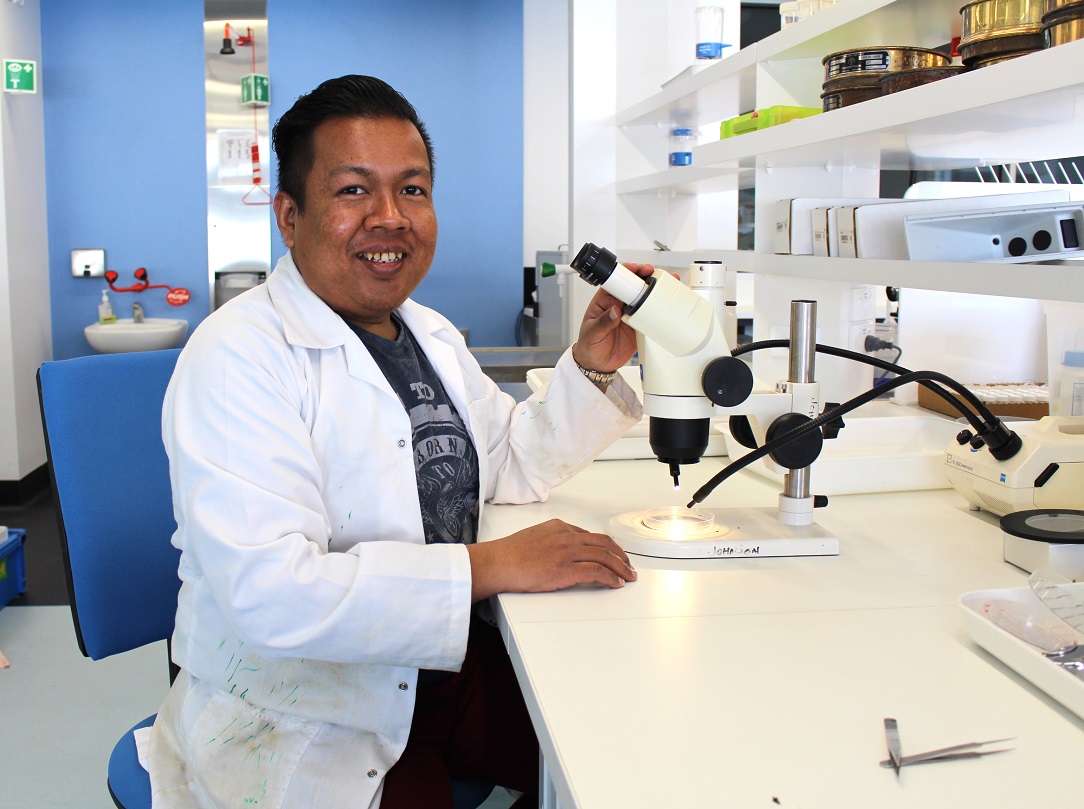
Threatened species in two countries could soon benefit from research by a recent IMAS graduate into how to eradicate an introduced fish pest.
Malaysian scientist Dr Lokman Norazmi completed his PhD in mid-2016 after four years’ study in Launceston into how to eradicate the tiny Gambusia, an unwelcome guest from North America that could be sued for false advertising.
Commonly known as the mosquitofish, the Gambusia was introduced to Australia in the 1920s in the mistaken belief that it would help to control mosquitoes and the spread of malaria.
Once here they ate anything but mosquito larvae, and Lokman says that as a result they’re a threat to native species of fish and frogs such as galaxiids, and golden and green bellfrog in Tasmania, where they’re found in wetlands along the Tamar River near Launceston.
 “Although they are very small they are also very aggressive. Not only do they compete for food but they also attack local fish and frogs, especially tadpoles.
“Although they are very small they are also very aggressive. Not only do they compete for food but they also attack local fish and frogs, especially tadpoles.
“There are more than 38 local fish and frogs that are currently being threatened in Australia.”
Working with his supervisors and long-time Gambusia researchers, Associate Professor John Purser and Dr Jawahar Patil, Lokman’s PhD studies focused on using the Gambusia’s own chromosomes to eradicate it.
“We are trying to develop a Trojan Y female. This is a female fish physically but genetically they have the YY chromosome.
“We hope that when we introduce this YY female into the wild they produce a male-biased population. When there are too many males it will collapse the whole population.
“Through my research we’ve managed to collect a lot of reproductive biology information that has never been reported before.
“This fish is quite amazing. The female can store sperm and from one mating they can produce up to nine broods. When they give birth, the largest clutch size that we have observed is about 280 fish.”
Having graduated in August, Lokman will now use his research to tackle Gambusia back home in Malaysia, where they’ve been identified in two major dams.
“In Malaysia there has not been much focus on invasive species. My plan is to go back home and see what I can do.
But Lokman is determined to maintain his ties with IMAS, and will continue to research Gambusia with John Purser and Jawahar Patil.
His Malaysian university, Universiti Malaysia Terengganu, where Lokman works as a lecturer, has a growing relationship with the University of Tasmania and the two signed an MoU in 2015.
Eradicating a major fish pest in both countries would be a welcome outcome of their research collaboration.